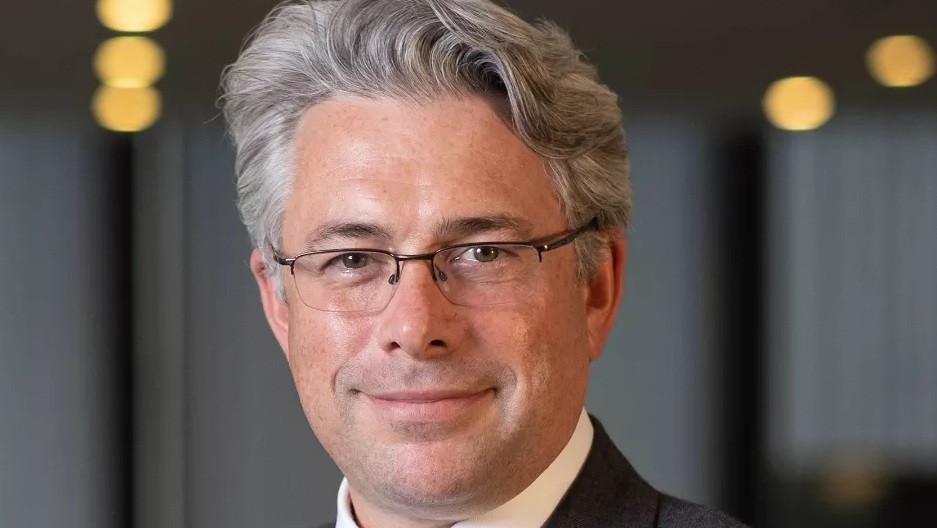
Aviva’s warning to MPs: London’s global warming much higher than Paris goals
Speaking to MPs today, the chief responsible investment officer at Aviva Investors urged caution around greenhouse emissions targets
London’s projected global warming is closer to 3.4°C if all fossil fuel reserves are used, rather than below 2°C as outlined in the Paris agreement, Aviva Investors' chief responsible investment officer warned today.
Speaking to the UK parliament’s Environmental Audit Committee this afternoon, Steve Waygood (above) urged “caution” around some of the numbers surrounding the UK’s Paris objectives and potentially its nationally determined contributions (NDCs) for reducing greenhouse gas emissions by 2030.
“Perhaps we might be in line for 1.8°C, but the reality of the moment when you look at the implied temperature change of the London market is that it's closer to about 3.4 degrees, if you were to assume that the proven and probable reserves of the fossil fuel sector are all used,” he said.
Every country signing up to the Paris agreement set out a target, known as the nationally determined contribution.
The aspiration under the agreement is to keep global heating well below 2°C above pre-industrial levels, with an aspiration to a 1.5°C limit.
In a ‘state of transition’
However, Waygood did highlight that the UK is in a “state of transition” to net zero, which has largely been driven through “policy, significant innovation as well as research and development”.
Only last week, an analysis by CarbonBrief found that the UK’s greenhouse gas emissions fell by 3.4% in 2022 due to strong growth in clean energy and record-high fossil fuel prices suppressing demand.
“So, I think it's appropriate to recognise huge progress, while also recognising the huge and the much, much bigger path ahead of us,” Waygood told MPs.
Tim Lord, UK head of climate change at HSBC, added to Waygood’s sentiment by suggesting that the UK has been able to reduce its emissions due to its “very investable power sector and the deployment of offshore wind and other renewables”.
“The key thing for us is that this is a very, very investment-heavy transition, not just in the UK, but globally. And secondly, it is an economy-wide transition”.
Although he highlighted that to accelerate the UK's net-zero transition even further there needs to be “the right incentives to invest” and the investment community needs to “see action” from other key sectors of the UK economy.
I think a relatively small amount of government support and clarity can go quite a long way in terms of really getting the investment moving that we need in some of the technologies.
Green Finance Strategy
A key topic highlighted at the committee meeting was the UK’s Green Finance Strategy, which the government is due to publish a refresh on.
The UK’s Green Finance Strategy was first launched in 2019 to help transition to a green financial system and mobilise investment in clean and resilient growth.
Lord identified four areas that the UK government should focus on in the refresh for London to retain leadership in the green finance space. The areas highlighted were partnership, clarity, alignment and de-risking.
He said: “This is a whole economy transition. It's one that obviously the financial services sector, HSBC and other banks have an absolutely central role to play. But what we need is a partnership with government and our investees in the real economy to identify funding gaps and crucially to create the right set of investment incentives to enable those gaps to be filled.”
On clarity, Lord expressed that the UK government should outline clear pathways on the “urgency of action” needed over the next decade towards transitioning. He stated that there needs to be more clarity in the strategy around the government’s key technologies and priorities for it to unlock private sector investment.
In the third area of focus, Lord detailed that through the refreshed strategy the investment community would like to see a “really strong alignment of long-term clarity in terms of policy intent, cross-party support funding, regulation, and incentives”.
“The last point is around de-risking, where I think it's really important to know that, at the moment, the risk of some of the low carbon technologies we're looking at from a finance perspective is slightly higher than some of their longest standing counterparts, simply because of the novelty of those technologies in the UK context.
“I think a relatively small amount of government support and clarity can go quite a long way in terms of really getting the investment moving that we need in some of the technologies,” Lord added.




